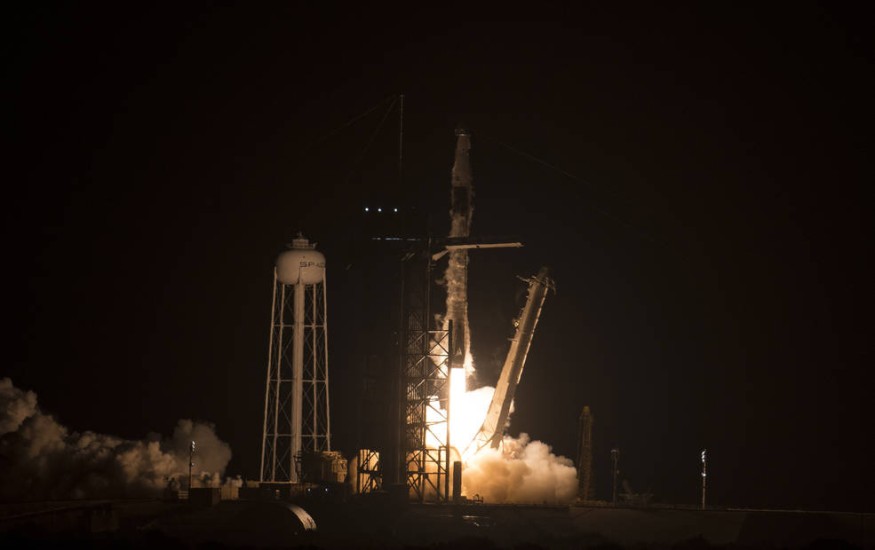A SpaceX Falcon 9 rocket successfully launched South Korea's first deep space mission, the Korea Pathfinder Lunar Orbiter (KPLO), from Cape Canaveral Space Force Station on Aug. 4.
Its first lunar spacecraft, Danuri, was launched on schedule from Florida at 7:08 p.m. Eastern time by a SpaceX Falcon 9 rocket. The mission paved the way for future, more ambitious lunar missions.
Around 2.5 minutes after launch, the two rocket stages split apart and parted ways. Nine minutes after takeoff, the first stage descended for a precise landing on the SpaceX droneship "Just Read the Instructions." According to a mission description from SpaceX, it was the veteran booster's sixth touchdown.
The Korean spacecraft split from the rocket's second stage after 40 minutes and many engine firings, starting its voyage to the moon.
It will join NASA, India, and the Chinese spacecraft currently investigating Earth's moon when it enters lunar orbit. The scientific payload of Danuri will examine the moon's magnetic field, count elements, and chemicals, including helium-3, water, and uranium, and take pictures of the shadowy pole craters where the sun never shines.
South Korea's Moon Mission: Here's What Danuri Will Do
The New York Times explained that the mission, known as Danuri, is a mashup of the Korean words for "moon" and "enjoy." It was once known as the Korea Pathfinder Lunar Orbiter. It will be the first space mission from South Korea to travel beyond low-Earth orbit.
A magnetometer, a gamma-ray spectrometer, and three cameras are among its scientific apparatus. One of the cameras, called ShadowCam, was made available by NASA. It is sensitive enough to capture the few photons that refract off the surface into the moon's deep, permanently darkened craters. These craters, which are found on the poles of the moon, are permanently frigid (below minus 300 degrees Fahrenheit), and they are filled with water ice that has built up through the ages.

ALSO READ : SpaceX Suddenly Aborts Falcon 9 Rocket Launch From Landing Zone 4 in Vandenberg Air Force Base
Future astronauts who travel there might find a wealth of resources and a frozen record of the 4.5 billion-year solar system. Such ice may also be taken out, melted to produce water, and split into oxygen and hydrogen to produce both air for astronauts to breathe and rocket fuel for anyone who wants to leave the moon for other places.
In a statement, officials from the Korea Aerospace Research Institute (KARI) overseeing said that Danuri would be the first step in guaranteeing and proving South Korea's space exploration capabilities.
NASA-KPLO Link
ShadowCam is just one aspect of NASA's cooperation in KPLO. NASA also chose nine more researchers to take part in the project.
"It's fantastic that the Korea Aerospace Research Institute lunar mission has NASA as a partner in space exploration - we're excited to see the new knowledge and opportunities that will arise from the KPLO mission as well as from future joint KARI-NASA activities," KPLO project manager Sang-Ryool Lee said in a statement last year.
Additionally, Space.com reported that KARI-NASA partnership might end up being substantial. ShadowCam and other Danuri devices may offer information regarding the availability of lunar resources for NASA's Artemis program, which is attempting to create a permanent, sustainable human presence on and around the moon by 2030.
The Artemis Accords, a set of guidelines intended to encourage ethical lunar exploration, are also ratified by South Korea. In May 2021, South Korea became the tenth nation to ratify the Accords. Since then, eleven other nations have done the same.
RELATED ARTICLE : SpaceX Eyes Launching NASA's Crew-5 Mission Astronauts to International Space Station in September
Check out more news and information on SpaceX in Science Times.
© 2025 ScienceTimes.com All rights reserved. Do not reproduce without permission. The window to the world of Science Times.












